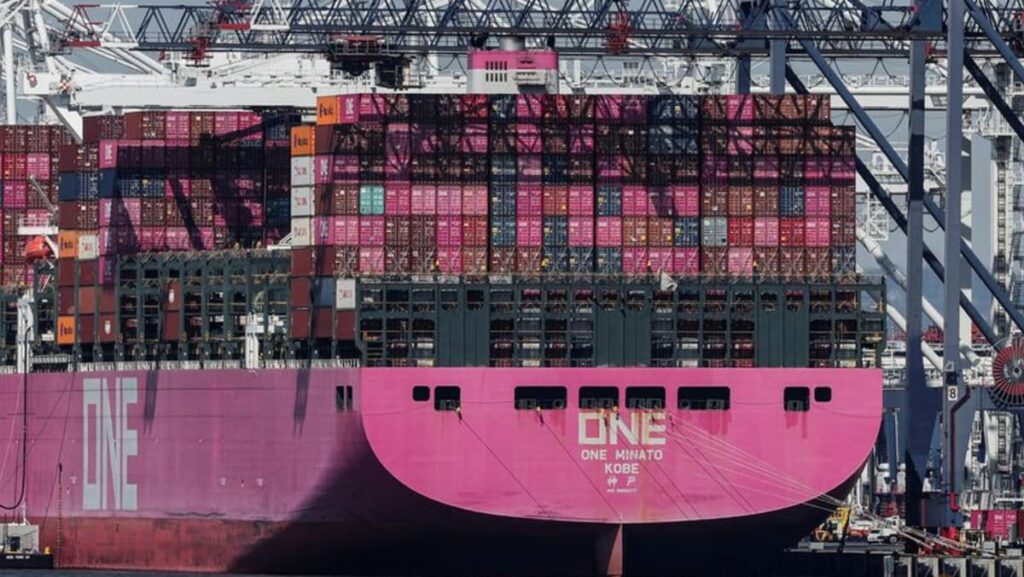Dominant after World War II, the US shipbuilding industry has gradually declined and now accounts for just 0.1 per cent of global output.
The sector is now dominated by Asia, with China building nearly half of all ships launched, ahead of South Korea and Japan. The three Asian countries account for more than 95 per cent of civil shipbuilding, according to UN figures.
There will be separate fees for Chinese-operated ships and Chinese-built ships, and both will gradually increase over subsequent years.
For Chinese-built ships, the fee starts at US$18 per NT or US$120 per container – meaning a ship with 15,000 containers could see a whopping fee of US$1.8 million.
Beijing warned on Friday the new fees would be “detrimental to all parties.”
“They drive up global shipping costs, disrupt the stability of global production and supply chains, increase inflationary pressure within the United States, and harm the interests of American consumers and businesses,” foreign ministry spokesman Lin Jian said.
“Ultimately, they will not succeed in revitalising the US shipbuilding industry,” he said.
EXEMPTIONS
The revisions tackle major concerns voiced in a tsunami of opposition from the global maritime industry, including domestic port and vessel operators as well as US shippers of everything from coal and corn to bananas and cement.
They grant some requested carve-outs, while phasing in fees that reflect the fact that US shipbuilders, which turn out about five vessels annually, will need years to compete with China’s output of more than 1,700 a year.
The USTR exempted ships that ferry goods between domestic ports as well as from those ports to Caribbean islands and US territories. Both American and Canadian vessels that call at Great Lakes ports have also won a reprieve.
As a result, companies such as US-based carriers Matson and Seaboard Marine would dodge the fees. Also exempt are empty ships arriving at US ports to load up with exports such as wheat and soybeans.
Foreign roll-on/roll-off auto carriers, known as ro-ros, are eligible for refunds of fees if they order or take delivery of a US-built vessel of equivalent capacity in the next three years.
The USTR set a long timeline for liquefied natural gas (LNG) carriers.
They are required to move 1 per cent of US LNG exports on US-built, operated and flagged vessels within four years. That percentage would rise to 4 per cent by 2035 and to 15 per cent by 2047.
The agency, which will implement the levies in 180 days, also declined to impose fees based on the percentage of Chinese-built ships in a fleet or on prospective orders of Chinese ships, as originally proposed.
The fees will be applied once each voyage on affected ships a maximum of six times a year.
CHINA’S MARITIME ACTIVITIES
The notice comes on the one-year anniversary of the launch of the USTR’s investigation into China’s maritime activities.
In January, the agency concluded that China uses unfair policies and practices to dominate global shipping.
The actions by both the Biden and Trump administrations reflect rare bipartisan consensus on the need to revive US shipbuilding and strengthen naval readiness.
Leaders of the United Steelworkers and the International Association of Machinists and Aerospace Workers, two of five unions that called for the investigation that led to Thursday’s announcement, applauded the plan and said they were ready to work with the USTR and Congress to reinvigorate domestic shipbuilding and create high-quality jobs.
The American Apparel & Footwear Association reiterated its opposition, saying port fees and proposed tariffs on equipment will reduce trade and lead to higher prices for shoppers.
At a May 19 hearing, the USTR will discuss proposed tariffs on ship-to-shore cranes, chassis that carry containers and chassis parts. China dominates the manufacture of port cranes, which the USTR plans to hit with a tariff of 100 per cent.
The Federal Register did not say if the funds raised by the fees and proposed crane and container tariffs would be dedicated to fund a revival of US shipbuilding.



